20,000 days of nature conservation
At the end of this summer, on August 30, 2017, the Nature Conservancy of Canada (NCC) will mark exactly 20,000 days of conservation. This milestone provides an opportunity to celebrate and reflect on the work done by NCC and our partners each day, and the conservation we need to accomplish in the 20,000 days to come.
Since the countdown to 20,000 days starting ticking in 1962, much has changed at NCC and the world we live in. Originally launched by a small band of determined naturalists, and now a national organization with reach and supporters across the country, NCC has made critical contributions to the conservation of Canada’s wild species and spaces. With our partners and supporters, we’ve helped to protect 2.8 million acres (more than 1.1 million hectares) of some of the most important natural habitats in Canada.
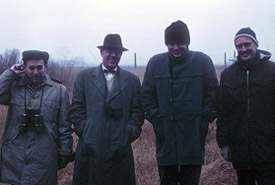
J. Bruce Falls, Richard Pough, Aird Lewis and David Fowle. First exploratory meeting for the Nature Conservancy of Canada, 1961 (NCC archives)
The more than 480,000 acres (194,000 hectares) owned and managed by NCC in southern Canada are helping to conserve private lands that government alone cannot protect. The conservation of these lands contributes to Canada’s efforts to secure critical habitat for species at risk, conserve ecosystems that represent the biodiversity of all Canadian landscapes and protect lands and waters that buffer and connect parks and other protected areas.
Forging strong bonds
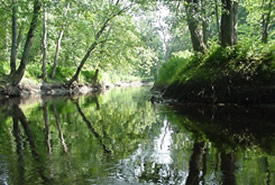
Minesing Wetlands (Photo by Nottawasaga Valley Conservation Authority)
Some of the places that NCC and our partners have worked to protect have taken thousands of days to secure, and their conservation and restoration is still ongoing. NCC first starting protecting land in the Minesing Wetlands, near Barrie, Ontario, in 1971. Today, more than 9,800 acres (4,000 hectares) have been conserved here in partnership with the Nottawasaga Valley Conservation Authority, creating one of the largest protected areas in southern Ontario; an accumulation of success that makes a difference today and will ripple through generations to come.
Some of the places conserved by NCC, such as Middle Island in Lake Erie or Princess Louisa Inlet along BC’s coast, have been transferred from NCC ownership to become national and provincial parks. Other places that NCC helped to conserve are now owned and cared for by local land trusts, such as the Georgian Bay Land Trust or the Nature Trust of New Brunswick.
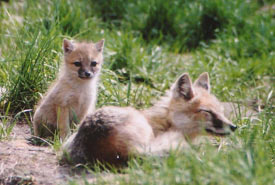
Swift fox cub and its mum (Photo by Catriona Matheson, Cochrane Ecological Institute)
NCC’s first 20,000 days have seen a shift in our attitudes and approaches to conservation. Among these, changes, more than 7,800 new parks and protected areas have been created in Canada by federal and provincial governments, since NCC was founded. The environmental movement of the late 1960s seeded the creation of the United Nations Environment Programme. And the swift fox and black-footed ferret were returned to Canada’s prairies. These are important and amazing conservation successes that should give us evidence for hope.
Race for better conservation
But here is our challenge today: despite these many conservation successes, nature is still losing ground. We are continuing to add wildlife to our list of endangered species and continuing to witness the loss and fragmentation of important habitats. In the last 20,000 days, populations of Sprague’s pipit, chestnut–collared longspur and other grassland birds in the prairies have declined by more than 80 per cent. In the last 20,000 days, more than 187,000 acres (76,000 hectares) of wetlands were lost from southern Ontario, and the footprint of industrial development has continued to expand into our northlands. Our natural spaces are also facing new threats, such as invasive species and climate change, that were unknown 20,000 days ago.
We have made important progress, but our work must continue.
What will the next 20,000 days hold for conservation? Where do we need to be by May 2072? As we lose more nature, the value of nature often becomes clearer, sharpening the image of the world that must be. The future of conservation needs to be founded on three main pillars: protected areas, sustainable land and water use and people that are connected to nature.
We need to create a future where key areas for nature are clearly identified and protected. This includes completing our systems of national and provincial parks, creating large-scale wildlife corridors and developing local natural heritage networks. Canada must also lead the world in Indigenous and community-conserved areas, particularly in our North, where we have an opportunity to protect some of the planet’s last true wilderness. This is the work that NCC does very well, but we need to do more, and we need to do it faster. There are important spaces and species that we need to protect now before the opportunity slips away forever.
Come together
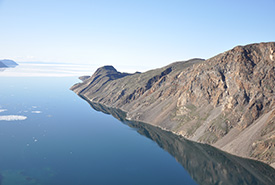
Inlet around Lancaster Sound, NU © Parks Canada/Diane Blanchard
We also need to ensure these protected and conserved areas are nested within a matrix of sustainable land and water uses. Our cities, farms and working forests can all provide habitat for wildlife and are key to reducing impacts to water, land and air. Many of our most endangered species and habitats occur in these places. They are also where most Canadians live, work and play. Our economy and well-being needs a foundation of healthy ecosystems.
Perhaps most importantly, we need to engage and support all Canadians in valuing nature. This includes helping Canadians to connect with nature in their communities, sparking wonder about our natural world and building awareness about the importance of Canadian conservation for Canada and for the world. Conservation ultimately fails if nature is not valued by people.
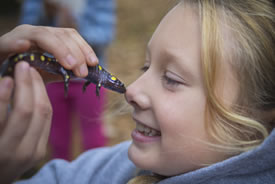
Covey Hill Nature Days, QC (Photo by HSBC)
Conservation requires time, but there is also great urgency to this work. Over the next 20,000 days, we will face perhaps one of the most defining opportunities for Canada’s wildlife and natural areas as we decide what is saved for future generations, and what is lost.
There is reason for optimism. From some of the world’s first national parks in the late 1800s, to species recovery efforts 100 years ago that we benefit from today, Canadians have a tradition of nature conservation. Today, we have science and information that can focus our conservation efforts on the most important areas, we have corporations that are embracing sustainability and we have a federal government that can match private donations through the Natural Areas Conservation Program, which has resulted in the conservation of 1,062,553 acres (more than 430,000 hectares) of significant habitat across Canada.
We choose the world we leave for future generations. Canadians living today have the opportunity to be the restoration generation. The generation that recovers our wildlife and protects critical areas. The generation that heals our lands and waters. The generation that embraces and reinforces our Canadian relationship with nature, and shares our conservation solutions with the world.
There is still much work to do as we start on the next 20,000 days of nature conservation in Canada. Each day will count.


